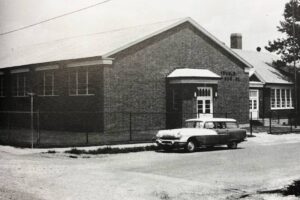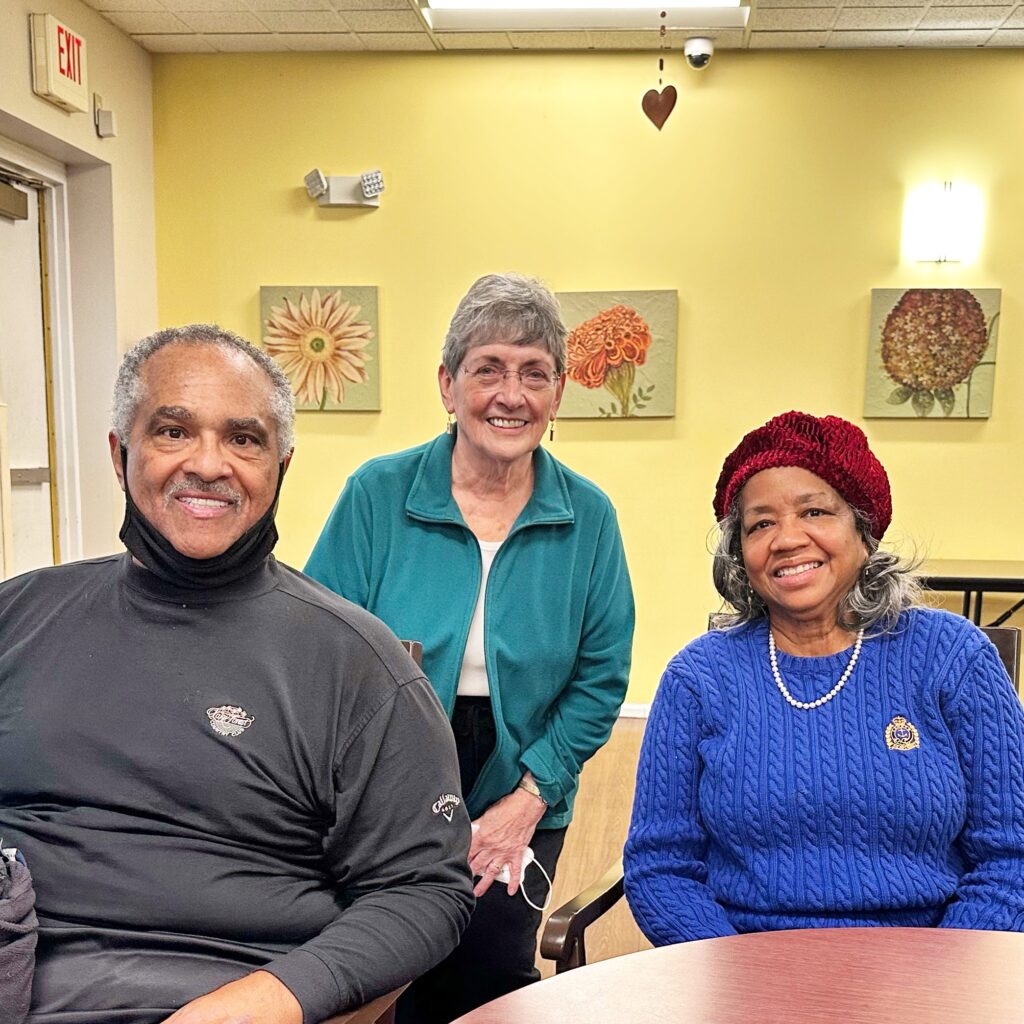The building on the corner of Laclede Station and Thomas Place in Richmond Heights has served many generations. In its early days as a schoolhouse, children found a place to dream and grow. Now as Richmond Terrace, a Lutheran Senior Services Assisted Living Community, older adults find the same opportunities.
The community recently celebrated the early roots of the building and surrounding neighborhood with a program featuring Joellen McDonald, author of “Richmond Heights: 1868-1940.” She was joined by longtime residents Marylynn Cole Sims and Richmond Heights Councilman Reginald Finney. Together, Joellen, Marylynn, and Reginald shared stories that helped listeners envision the lives of the people who once lived in the surrounding neighborhood and used the building as a school and community center.
Richmond Heights was incorporated in 1913 as a residential suburb of St. Louis. It grew to become a thriving Black community due to factors related to redlining – the practice of putting racial restrictions on regions of the city. Evens & Howard, a major brick company, built many of the homes in the Richmond Heights Hadley Township neighborhood.
Richmond Terrace was constructed in 1932 as New Lincoln School, an elementary school for Black children in the Richmond Heights neighborhood. This school joined the original Lincoln School, providing two schools for the growing community.

Marylynn shared her multi-generational story of Richmond Heights heritage. Her father was born and raised in the neighborhood and then in turn raised Marylynn, who still resides in Richmond Heights today. She recalled the days when the streets were unpaved dirt roads and when segregation determined where one lived and attended school.
“Lincoln Elementary was my first school,” Marylynn recalled. She helped Richmond Terrace residents and listeners imagine the room they sat in as she had first seen it many years ago as a kindergartner when it had green and gray tile. “Teachers were such an integral part of our community.” She recalled her teachers attending everything from city events to church gatherings. “School was our home away from home. Our safe haven. All the students were loved. It was such an enriching experience,” she said.
Reginald also grew up in the neighborhood and was in the last graduating class of New Lincoln School. “The teachers treated like us family. They loved on us and they had expectations of us,” he recalled fondly of his years as a student.
“It was more than just a school. It was our community center,” he said, recalling summer days when the area was full of people of all ages. Children on teeter-totters and merry-go-rounds, older kids playing football and basketball, even the men in a stairwell shooting craps and “talking stuff” – “I never felt safer in my life than when I was on that field,” he said.
The 1963-1964 school year was the last year for the New Lincoln School as an elementary school, but the building was soon back in use as a special education school. Then, in 1998, the New Lincoln School was reimagined as a senior living community. Many of the old features of the school remain. The brick was carefully matched so the building continues to fit in with the rest of the neighborhood. The gymnasium-auditorium became a dining room. In 2001, Lutheran Senior Services began operating Richmond Terrace Assisted Living Community.
Today, Richmond Terrace continues to provide a warm family atmosphere with high quality care. Team members and residents share a bond and enjoy enriching experiences together, including a vast array of programs like the one given by Joellen, Marylynn, and Reginald.
Many of the Richmond Terrace residents who attended the program gave rave reviews. “They did a great job. I enjoyed their stories,” said Joann. Her fellow Richmond Terrace resident, Ed, agreed. “Knowing the history of this place and knowing that we are in this neighborhood makes living here even better. It was a wonderful presentation.”


